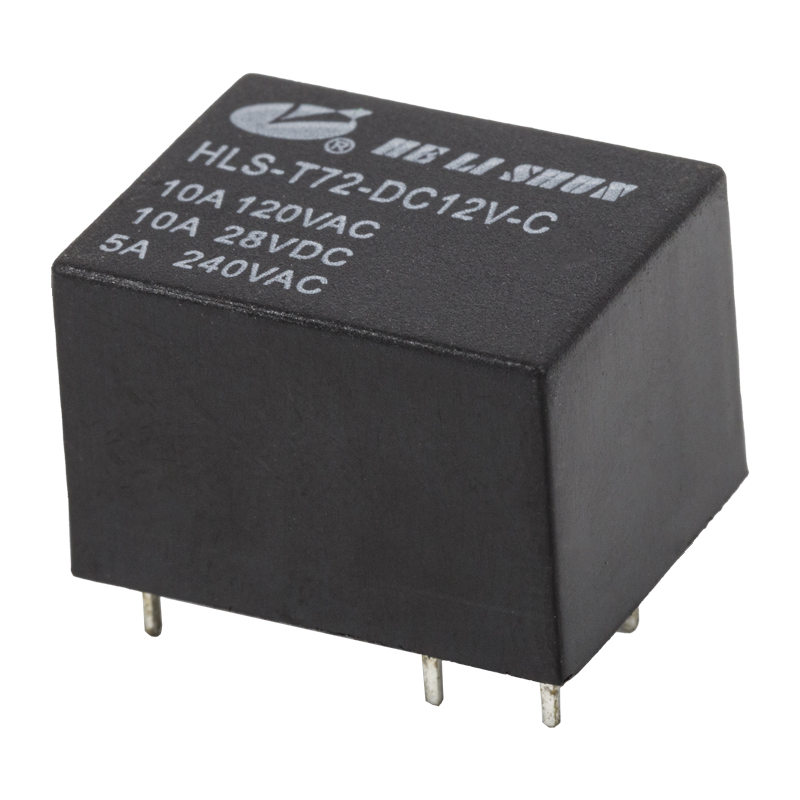For applications that require frequent switching operations, the mechanical durability of this high power relay is a key performance indicator. The mechanical durability test of high power relays usually follows national standards such as GB/T 14048.5, which describe and specify the durability performance of relays in detail. At the same time, relevant standards formulated by the International Electrotechnical Commission (IEC), such as IEC 61810, also provide test requirements and evaluation methods for the mechanical durability of relays.
Mechanical durability testing usually involves performing a specific number of actions, such as an action of 2 times the set value of electricity and a return of 0.7 times the set value of electricity, with no load on the contacts (signal loads below 5W are allowed) to verify the mechanical performance. During the test, the relay should operate and return reliably, the contacts should be reliably connected and disconnected, and stable arcs and adhesion of moving and static contacts should not occur.
Contacts are one of the most easily worn parts in high power relays. By simulating the actual working environment and performing multiple opening and closing operations on the contacts, their durability can be tested. Generally speaking, the standard value of mechanical life is usually required to be no less than 5,000 times, but this high power relay has been optimized and its contact life may far exceed this standard. The elastic recovery ability of the spring is another important factor that determines the mechanical durability of the relay. The durability of the spring can be tested by long-term compression and tension tests. High-quality spring materials and reasonable structural design can significantly improve the service life of the relay. The stability and reliability of the transmission mechanism are crucial to the overall performance of the relay. Long-term operation and vibration tests on the transmission mechanism can be used to test whether it will have problems such as jamming or failure.
Since the mechanical durability data of specific products may vary depending on the manufacturer, production process and test conditions, it is impossible to directly give a clear conclusion on whether this high power relay meets the industry standard. However, in general, as long as the manufacturer follows the relevant national standards and industry specifications for design and production, and undergoes rigorous testing and verification, this high power relay should be able to meet the industry's requirements for mechanical durability.
The mechanical parts of the relay are made of materials with excellent properties such as wear resistance, corrosion resistance, and fatigue resistance to improve their durability. Reasonable design of the relay structure can reduce friction and wear between mechanical parts and increase its service life. Ensure that every step in the manufacturing process meets standard requirements to reduce the impact of manufacturing defects on mechanical durability.
For applications that require frequent switching operations, the mechanical durability of this high power relay is an important consideration. By following relevant national standards and industry specifications for design and production, and undergoing rigorous testing and verification, it can be ensured that it meets the industry's requirements for mechanical durability. At the same time, by selecting high-quality materials, optimizing structural design, and strictly controlling manufacturing processes, its mechanical durability can be further improved.
Web Menu
Product Search
Exit Menu
news
Home / News / Industry News / For applications that require frequent switching operations, how is the mechanical durability of this high power relay, and does it meet industry standards?
How Can We Help You ?
We reaffirm the high quality service of "high quality, low cost", "integrity builds character, dedication to create quality" as the company's pursuit!
+86-0574-88473018 Contact UsFor applications that require frequent switching operations, how is the mechanical durability of this high power relay, and does it meet industry standards?
Posted by Admin | 13 Dec
PREV:In the design of telecom relay, why is gold + silver alloy chosen as the contact material, and how is this related to shock resistance and environmental humidity adaptability?
NEXT:How to prevent relay sockets from overheating during design and use?
NEXT:How to prevent relay sockets from overheating during design and use?
Related Products
-
 Hehuaqiao,Yunlong,Yinzhou District,Ningbo,Zhejiang
Hehuaqiao,Yunlong,Yinzhou District,Ningbo,Zhejiang
-
 Tel:+86-0574-88473018
Tel:+86-0574-88473018
+ 86-0574-88344018 -
 Fax:+86-574-88345918
Fax:+86-574-88345918
-
 E-mail: sales@helishun.com
E-mail: sales@helishun.com
sales2@helishun.com
About us
Ningbo Helishun Electron Co.,Ltd. is founded in 2000, located at Ningbo City, the Grand East port on the coastline of the East Sea. We are OEM/ODM Electromagnetic Relays Manufacturers in China
Extra links
QR code
Copyright ? Ningbo Helishun Electron Co.,Ltd. All Rights Reserved. Electrical Relays Suppliers




 English
English 中文简体
中文简体











